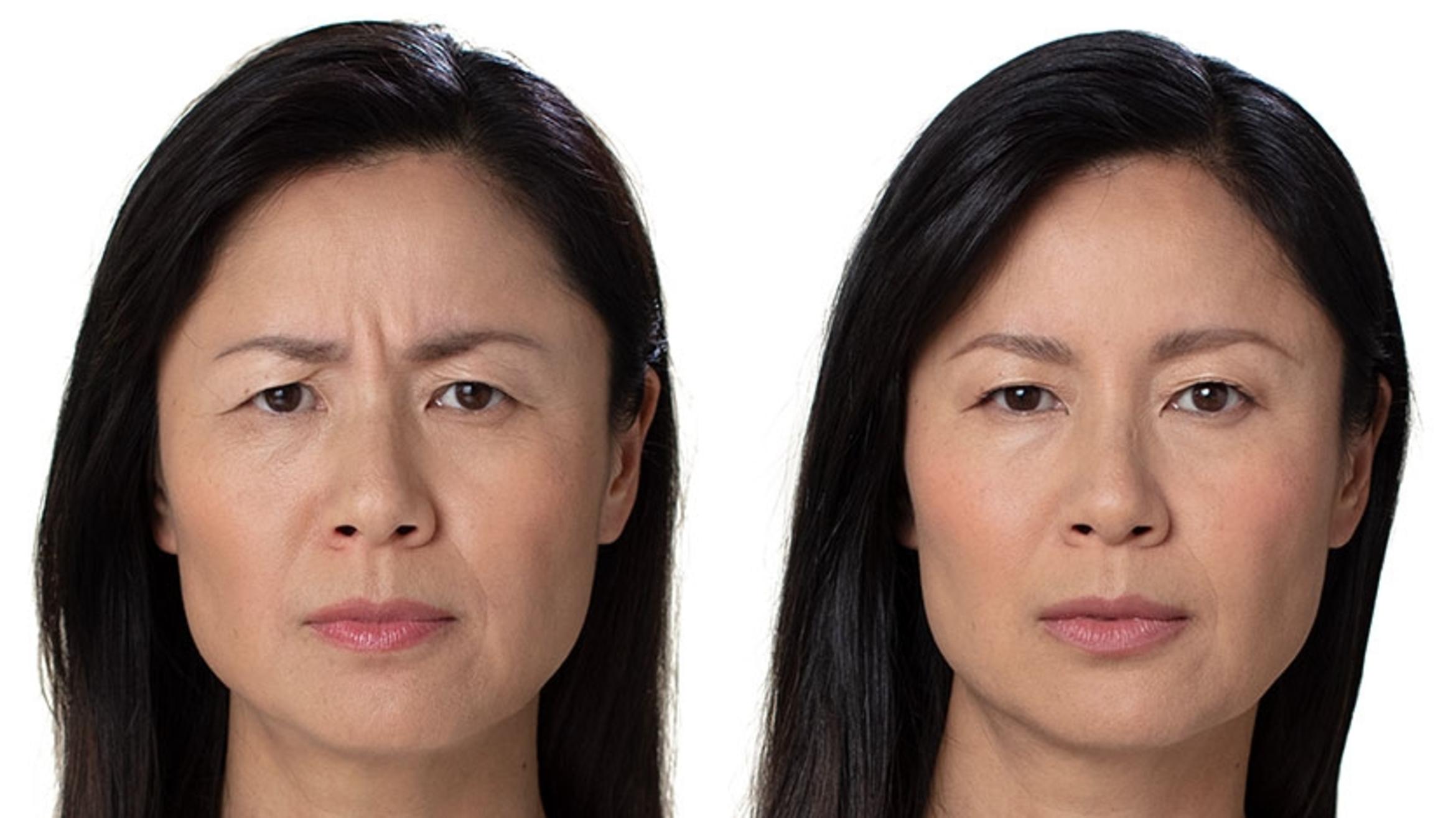Forehead Wrinkles

Forehead Wrinkles: Causes, Symptoms, and Treatments
What Are Forehead Wrinkles?

Forehead wrinkles are horizontal lines that appear across the forehead, often caused by repetitive facial expressions like raising your eyebrows, frowning, or squinting. These lines begin as dynamic wrinkles visible during movement but can eventually become static wrinkles visible even when the face is at rest.
Causes of Forehead Wrinkles
- Loss of Collagen and Elastin: Aging decreases collagen and elastin production, reducing skin firmness and elasticity.
- Repetitive Facial Movements: Ongoing muscle contractions create dynamic wrinkles that can become permanent over time.
- Constant Tone from Low Brows or Excess Eyelid Skin: Continual activation of forehead muscles to lift sagging brows or eyelid skin can deepen lines.
- Environmental and Lifestyle Factors: Sun damage, pollution, smoking, and poor hydration accelerate wrinkle formation by damaging skin structure.
Symptoms
- Visible horizontal creases on the forehead.
- Deepening lines with facial expressions or at rest.
- Tired or aged facial appearance.
Treatment Options
Daily Skincare for Wrinkle Prevention and Treatment
- Sunscreen: Protects against UV rays that break down collagen and elastin.
- Antioxidants (Vitamin C): Neutralizes free radicals and boosts collagen.
- Retinoids: Increase cell turnover and collagen production to improve skin texture.
- Hyaluronic Acid: Hydrates and temporarily plumps skin to smooth fine lines.
Neuromodulators
- Botox, Dysport: Temporarily relax forehead muscles, reducing dynamic wrinkles and preventing deeper lines. Effects last about 3-4 months.
Skin Treatments to Increase Collagen

- Radiofrequency (RF) Microneedling: Combines microneedling with RF energy to stimulate collagen deeply and tighten skin.
- Laser Treatments: Fractional lasers resurface skin and promote collagen regeneration.
- Light-Based Treatments: IPL and BBL encourage collagen and elastin production, improving skin texture.
Surgical Options

- Forehead Lift (Brow Lift): Surgical elevation of the brow and smoothing of forehead skin, providing long-lasting results.
Summary
Forehead wrinkles arise from a combination of aging, repetitive muscle activity, and environmental factors. A holistic treatment plan combining daily skincare, neuromodulators, and advanced technologies offers the best outcomes for smooth, youthful skin.
Consult with Our Team of Experts Now!
For customized forehead wrinkle treatments and skin rejuvenation plans, consult our dermatologists and facial plastic surgeons who employ the latest techniques to restore skin vitality.
References:
- Draelos ZD. The Science of Facial Wrinkles and their Treatment. J Clin Aesthet Dermatol. 2014 Dec;7(12):38-44. Available at: https://www.ncbi.nlm.nih.gov/pmc/articles/PMC4278179/
- Baumann L. Advances in Wrinkle Treatment: Neuromodulators and Beyond. Mayo Clin Proc. 2019 Apr;94(4):616-629. doi:10.1016/j.mayocp.2018.11.021. Available at: https://www.mayoclinic.org/diseases-conditions/wrinkles/diagnosis-treatment/drc-20354931
- Gold MH. Botulinum Toxin for Facial Wrinkles: Mechanism and Clinical Application. J Drugs Dermatol. 2019 Apr;18(4):346-351. Available at: https://www.ncbi.nlm.nih.gov/pmc/articles/PMC6489637/














